


Buddhist Festivals
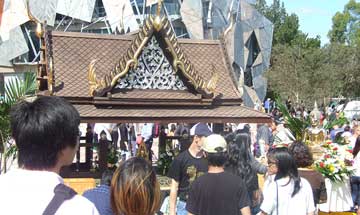
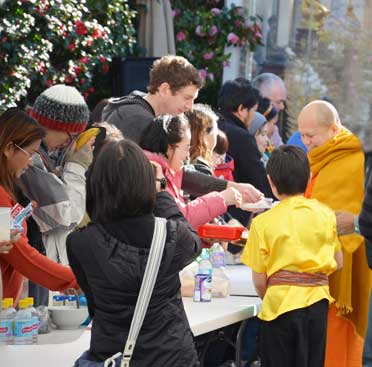
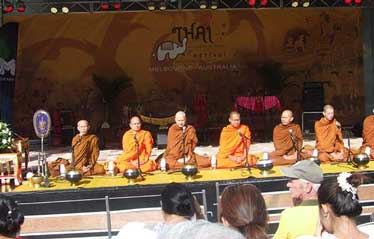
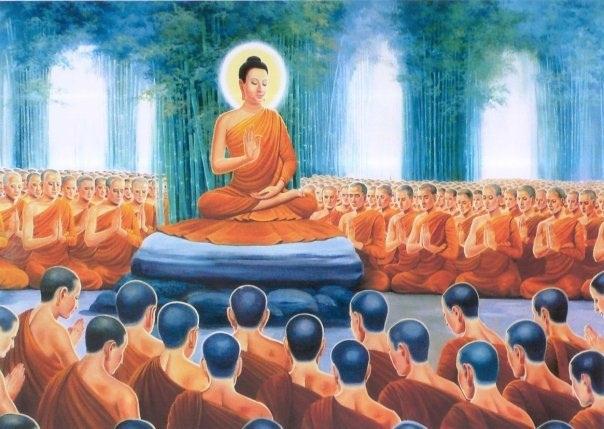
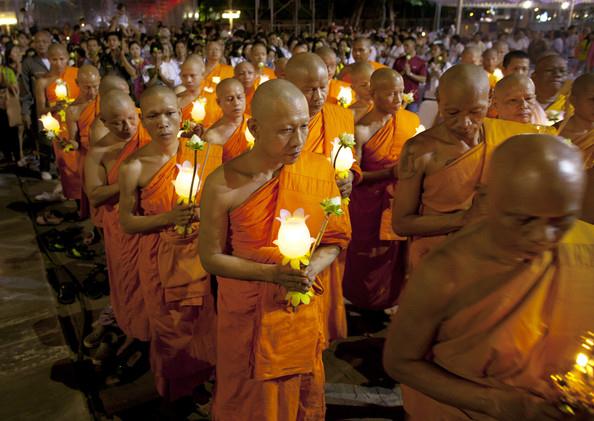
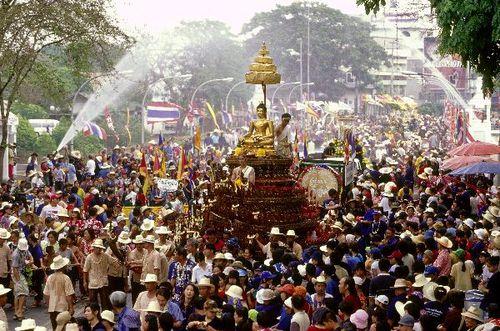
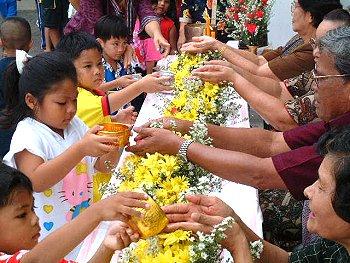
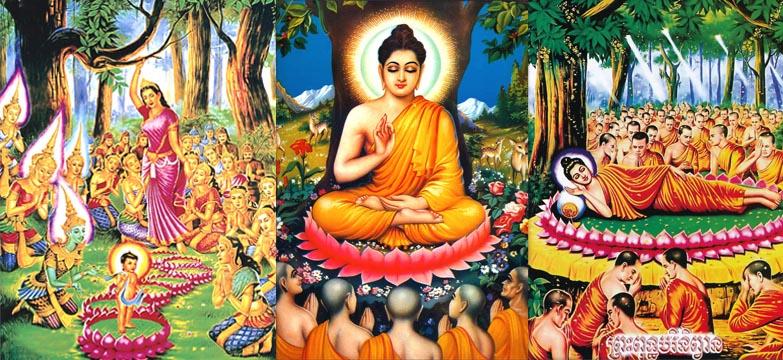
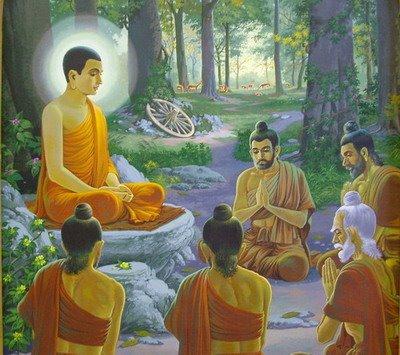
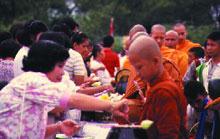
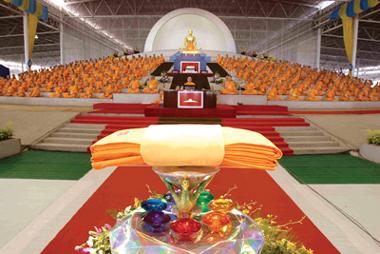
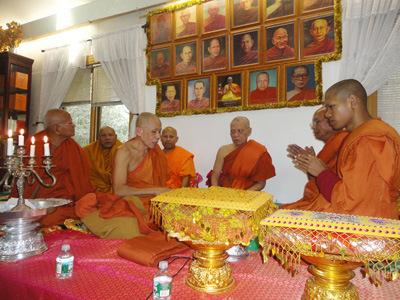

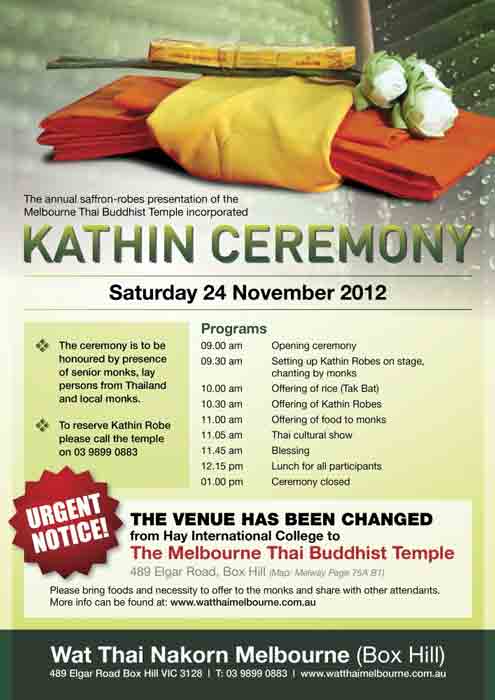
Buddhist Festivals are always joyful occasions. Typically on a festival day, lay people will come to the temple and offer food to the monks and take the Five Precepts and listen to a Dharma talk. In the afternoon, they share food together and in the evening join perhaps in a ceremony of circumambulation around a Pagoda or Cetiya three times as a sign of respect to the Buddha, Dhamma, Sangha. The day will conclude with evening chanting of the Buddha's teachings and meditation.
Buddhist Festivals
Magha Puja Day Songkran Visakha Puja Asalha Puja Day Kathina Ceremony Sacred Candle Moulding
Magha Puja Day Songkran Visakha Puja Asalha Puja Day Kathina Ceremony Sacred Candle Moulding
Major Festivals
• Magha Puja Day (Fourfold Assembly or Dhamma Day) - (March)
• Magha Puja Day (Fourfold Assembly or Dhamma Day) - (March)
Magha Puja Day takes places on the full moon day of the third lunar month (March). This holy day is observed to commemorate an important event in the life of the Buddha. This event occurred early in the Buddha's teaching life.
After the first Rains Retreat (Vassa) at the Deer Park at Sarnath, the Buddha went to Rajagaha city where 1250 Arahats, (Enlightened saints) who were the Buddha's disciples, without prior appointment, returned from their wanderings to pay respect to the Buddha. They assembled in the Veruvana Monastery with the two chief disciples of the Buddha, Ven. Sariputta and Ven. Moggalana.
The assembly is called the Fourfold Assembly because it consisted of four factors: (1) All 1,250 were Arahats; (2) All of them were ordained by the Buddha himself; (3) They assembled by themselves without any prior call; (4) It was the full moon day of Magha month (March).
After the first Rains Retreat (Vassa) at the Deer Park at Sarnath, the Buddha went to Rajagaha city where 1250 Arahats, (Enlightened saints) who were the Buddha's disciples, without prior appointment, returned from their wanderings to pay respect to the Buddha. They assembled in the Veruvana Monastery with the two chief disciples of the Buddha, Ven. Sariputta and Ven. Moggalana.
The assembly is called the Fourfold Assembly because it consisted of four factors: (1) All 1,250 were Arahats; (2) All of them were ordained by the Buddha himself; (3) They assembled by themselves without any prior call; (4) It was the full moon day of Magha month (March).
• Songkran (SE Asian New Year Celebration) - (April)
In Theravadin countries, Thailand, Burma, Sri Lanka, Cambodia and Lao, the new year is celebrated for three days from the first full moon day in April. People enjoy sprinkling perfumed water on the monks, novices and other people.
Songkran is a Thai word which means "move" or "change place" as it is the day when the sun changes its position in the zodiac. It is also known as the "Water Festival" as people believe that water will wash away bad luck.
Dana, chanting, blessing, short sermon, fund raising Food Fete, SE Asian traditional dances are part of the celebration programmes.
Songkran funds are used for new building projects, living expenses required for the monastery and its inhabitants.
Songkran is a Thai word which means "move" or "change place" as it is the day when the sun changes its position in the zodiac. It is also known as the "Water Festival" as people believe that water will wash away bad luck.
Dana, chanting, blessing, short sermon, fund raising Food Fete, SE Asian traditional dances are part of the celebration programmes.
Songkran funds are used for new building projects, living expenses required for the monastery and its inhabitants.
• Visakha Puja (Buddha Day) - (May)
Traditionally, Buddha's Birthday is known as Vesak or Visakah Puja (Buddha's Birthday Celebrations). Vesak is the major Buddhist festival of the year as it celebrates the birth, enlightenment and death of the Buddha on the one day, the first full moon day in May, except in a leap year when the festival is held in June. This celebration is called Vesak being the name of the month in the Indian calendar.
• Asalha Puja Day (Sangha Day) - (July)
Asalha Puja means to pay homage to the Buddha on the full moon day of the 8th lunar month (approximately July). It commemorates the Buddha's first teaching: the turning of the wheel of the Dhamma (Dhammacakkappavattana Sutta) to the five ascetics at the Deer Park (Sarnath) near Benares city, India. Where Kondanna, the senior ascetic attained the first level of enlightenment (the Sotapanna level of mind purity).
• Kathina Ceremony (Robe Offering Ceremony) - (November)
The Kathina is held on any convenient date within one month of the conclusion of the three month rains retreat season (Vassa) for the monastic order. Katthina is a Ceremony which celebrates the mutual appreciation between the lay Buddhist community and the monastic Sangha (community of monks). The Sangha provides teachings of the Dhamma (Buddha's teachings) freely every day. Thus this Katthina celebration allows lay people to express gratitude by making donations or offering material requisites for the Sangha. It is also known as the "Robes Offering ceremony". It is according to Buddhist tradition, that after the Rain's retreat, robes are offered to monks that have spent the time in the rains on their fixed abode.